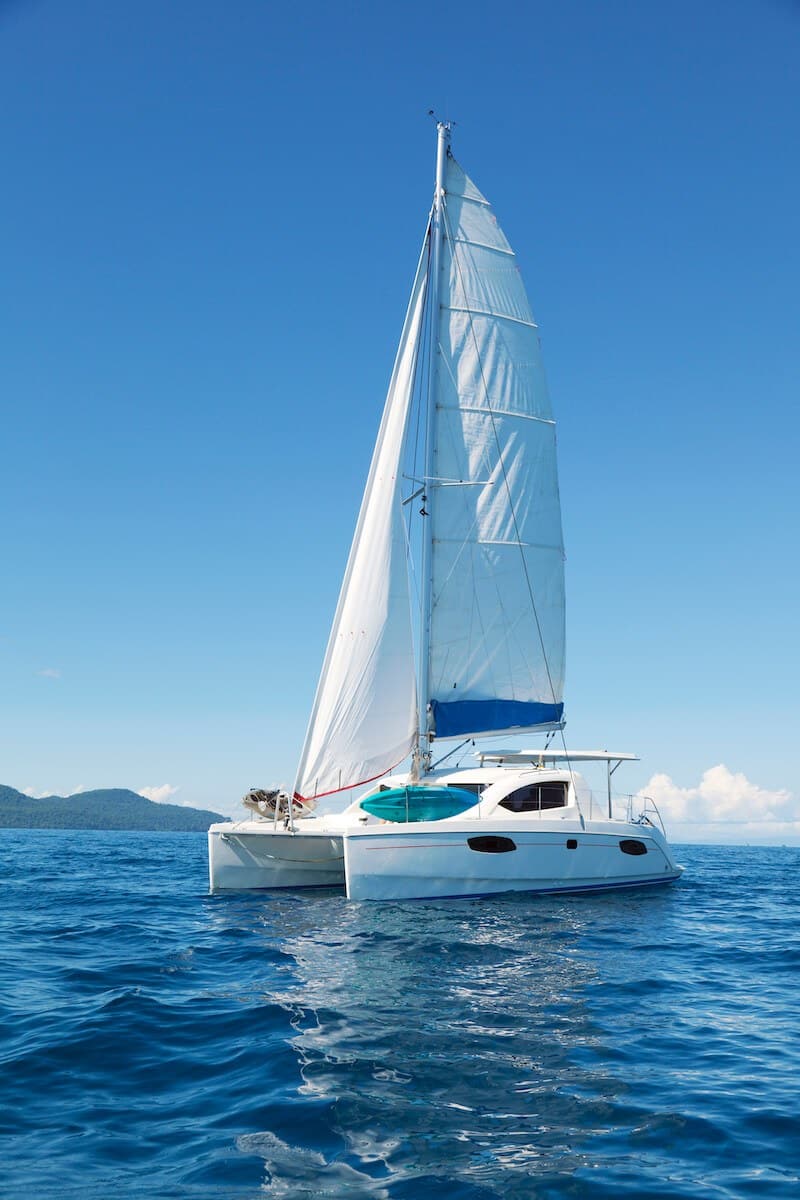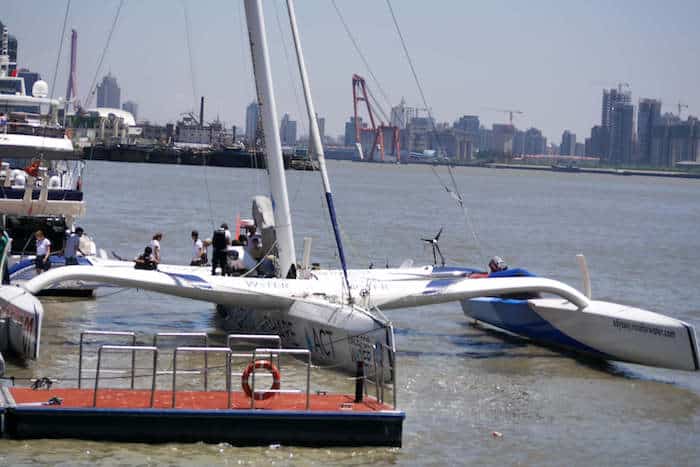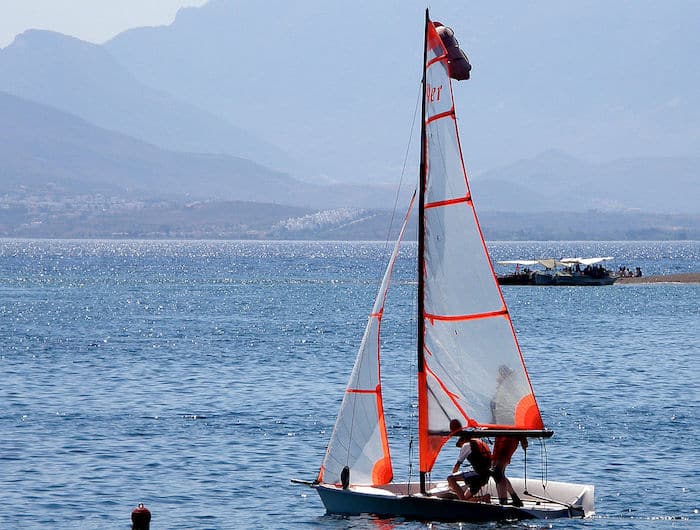As the name suggests, sailboats rely on the power of the wind for propulsion and use a large cloth or synthetic sails for this purpose.
Sailboats are considered to be a separate class of vessels independent of motor-powered crafts since their hydrodynamic characteristics differ.
They can vary in occupancy from single-seater crafts for competition purposes to recreational vessels spanning hundreds of metres that can host up to thirty individuals.
The most common type of sailboat on the market is the small competition variant that is used in sailing competitions around the world. Several international events intended to raise awareness about sailing allow a wide range of craft types to participate including catamarans and cruisers.
For most sailing vessels, sail plans are often drawn up before the vessel leaves port. These plans indicate sail positions for various weather conditions. Reference
In this article, we will go through the various types of sailboats and their key features.
Hull Based Classification Of Sailboats
Sailboats can be classified into three distinct types based on their primary hull design.
These include
- monohulls,
- catamarans, and
- multi-hull crafts.
Traditionally, monohulls are the most common design for sailboats since they provide storage in addition to a certain level of vessel stability.
However, with the advent of sailing competitions and an increased focus on the performance and stability features of these crafts, there has been a general shift towards the more favourable catamarans and trimarans.
Monohulls are single-hulled structures, much like conventional vessels, that have a large hull beam (breadth) which provides stability while sailing. The advantage with having a single large hull is that the longer beam allows for improved onboard systems.

monohull
Catamarans refer to twin-hulled structures that are attached by specialized members to provide strength. The term originates from the South Indian phrase for “tied pieces of wood”, as this was the manner in which traditional boats were built on the subcontinent.

Catamaran
The advantage of having twin-hulls is that there is an increased level of stability. In addition, if designed properly the vessel will have a much higher speed than conventional crafts owing to lower wetted-surface resistance forces.
On the other hand, extensive care must be taken in designing the vessel, else the resistive forces can exceed the values found in monohulls.
Multi-hull crafts include vessels with anywhere between three to five hulls, although the three-hull variation is the most common. Such crafts are known as trimarans and are considered to be extremely stable owing to their large beam and a lower centre of gravity.

Trimaran
Four and five hulled vessels are more difficult to manufacture and hence are rarely used commercially. An advanced form of the catamaran design is the SWATH version.
SWATH is an acronym for Small Waterplane Area Twin Hull, and it achieves unprecedented levels of speed owing to a considerably small waterplane area. To reduce this area, the hull has a reduced beam above the surface of the water while underwater buoyant structures ensure that the vessel has the necessary weight balance.
Common Monohull Designs
Monohulls are relatively easier to manufacture compared to multi-hull structures. Thus, there has been a wider range of innovation for this type of hull over the last thousand years.
The common classes of monohull crafts are – dinghy, cutter, sloop, catboat, ketch and schooner.
A dinghy is a relatively common sailboat owing to its short overall length and ease of manoeuvring. They are used in competitions and in the port industry.
Generally, dinghies are used to transport people or small cargo to and from a larger vessel such as a cruise ship that is anchored away from the shore.
Such vessels may not be able to enter a port due to size and tonnage regulations. Hence, dinghies serve as the best mode of transporting essential goods between the port and the vessel.

Image credits: Dinghy / Wikipedia
Dinghies can have sails, such as the three-sailed variant consisting of the mainsail, jib and spinnaker. However, motor-powered dinghies are also commonly used especially as life-boats on-board ships.
Cutters are another class of sailboats that are medium-sized and generally have three sails. The main mast on which the sails are mounted is located near the stern of the ship to allow for larger sails to be used.
Cutters were commonly used in competitions as their design favours speed and agility. A different combination of the sails also allows cutters to be used for cruises and other recreational sailboats.
Read more: sailboats for sale in florida
Sloops are similar to cutters and are the most commonly found sailboats. They are the standard in sail designs, with a two-sail configuration used for added manoeuvrability.
In addition to the generic sloop sail configuration, there is also a fractionally-rigged sloop in which one of the sails lies below the top of the mast.
This design allows the crews of smaller sloops to handle the craft while improving performance. Catboats are sailboats equipped with only a single sail. They are aimed at capacity rather than speed and have the mainsail mounted on a single mast.
For increased speeds, sails can be added to the rigging such that wind force is better optimized by the vessel.
The ketch is a sailboat that has two main masts- the main mast located around the midship, and the mizzen mast at the aft. The mizzen mast is generally smaller than the main mast and serves to add speed to the craft. The word ketch is derived from the word catch, denoting the manner in which the sails “catch” the wind as they move.
Schooners are a class of sailboat that can have more than two sails supported on masts known as the main-mast and foremast. The foremast is located near the fore of the vessel and is slightly shorter than the main-mast. In variations where additional masts are added to support more sails, they are positioned such that they remain shorter than the main-mast depending on their sizes.
Keel Based Classification
The keel is the base of a vessel that provides a central backbone for the design of the entire structure. The boat keel is structurally relevant since it often has to carry the weight of the vessel.
In the case of sailboats, the keel is often what the entire craft rests on during transport by road or rail. Thus, keels need to have integral strength and be able to withstand a variety of forces.
Similarly, while sailing, the keel is the lowermost point of the vessel at which resistive forces act. As a result, many modifications are often made to the keel so that hydrodynamic features can be incorporated to reduce drag. Sailboats often sit high in the water owing to their design and shape.
No comments:
Post a Comment